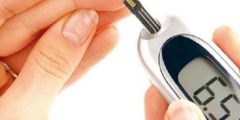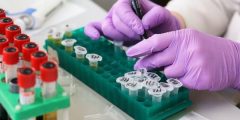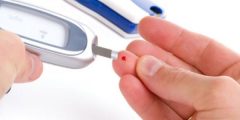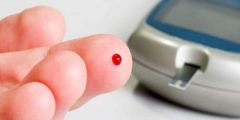diabetes
In a normal situation, the pancreas secretes the hormone insulin to help store sugar and fat and utilize them. Diabetes Mellitus is defined as a group of diseases that are represented by disorders and problems in the insulin hormone. The lack or lack of the body secreting the hormone insulin, or the cells not responding to the secreted insulin properly. It can be said that diabetes has two basic types. The first type (in English: Type 1 Diabetes) in which the immune system attacks the cells that produce the pancreas and destroys them. As for the second type of diabetes (in English: (Type 2 Diabetes) in which the pancreas secretes the hormone insulin or the cells’ response to the secreted insulin weakens. In fact, the second type of diabetes is the most famous and common. It is worth noting that although there is no cure for diabetes, there are many treatment options that Maintain the patient's health and protect him from complications as much as possible.
Symptoms of diabetes
In fact, type 1 diabetes usually appears suddenly within a few days or weeks, while type 2 diabetes appears gradually, and its symptoms are often general at first. This is what causes people to not know they suffer from diabetes until after For many years, it should be noted that the severity of symptoms varies depending on blood sugar levels, and the most important symptoms that appear in people with diabetes can be stated as follows:
Read also:How to use an insulin pen- Excessive feeling of thirst.
- Frequent need to urinate, especially during the night.
- Feeling very hungry.
- Repeated infections, especially those affecting the gums, vagina, and skin.
- feeling very tired
- Weight loss and decline in muscle mass.
- The appearance of ketone bodies in the urine, and these bodies can be defined as the products of the processes of breaking down fats and muscles in the absence of insulin in the body.
- Suffering from itching around the penis in men and the vagina in women, or recurring fungal infections.
- Slow wound healing.
- Blurred vision.
Diabetes risk factors
Risk factors for type 1 infection
Although it is not possible to completely determine the cause of suffering from type 1 diabetes, there are some factors that are believed to play a role in increasing the risk of developing it, including the following:
- Family history: The risk of developing type 1 diabetes increases if a parent or sibling suffers from this disease.
- Environmental factors: Exposure to some types of viruses may increase the likelihood of developing this type of diabetes.
- Presence of autoantibody: Autoantibody is defined as destructive immune cells, and it has been found that the presence of these cells may increase the risk of developing type 1 diabetes. This does not negate the fact that some people did not suffer from diabetes despite the presence of these cells in their bodies.
- Nature of food: Although there is no direct cause of any type of food for type 1 diabetes, it is believed that eating grain crops before the fourth month of life, consuming cow's milk at an early age, and lack of intake and consumption of vitamin D increase the risk of developing this disease.
- Nature of geography: An increase in the incidence of type 1 diabetes has been found in some countries and countries, such as Finland and Sweden.
Read also:How do I know if I have diabetes?
Risk factors for type 2
In fact, scientists have not been able to know the reason why some people develop type 2 diabetes and others do not, but it is believed that there are a group of factors that increase the risk of developing it, and these factors include the following:
- the weight: The more weight you gain, the more resistant your cells become to insulin, which in turn increases your risk of diabetes.
- idle: Lack of activity and inactivity increase the chance of developing type 2 diabetes, because activity helps control weight, stimulates the use of glucose to produce energy, and increases the sensitivity of cells to insulin.
- family history: The chance of developing diabetes increases if you have a parent or sibling with diabetes.
- Age: As a person ages, his rate of physical activity decreases, and he is more susceptible to weight gain, and perhaps this explains the increased chance of developing diabetes as a person gets older.
- Sweat: There are some races in which type 2 diabetes is more common than others, such as blacks, but scientists have not yet been able to explain the reason behind this.
- Pregnancy diabetes: The risk of developing type 2 diabetes increases if a woman suffers from gestational diabetes or if she gives birth to a baby weighing more than four kilograms.
- Polycystic ovary syndrome: The chance of developing diabetes increases if you suffer from polycystic ovary syndrome. This syndrome can be defined as a menstrual disorder, obesity, and excessive hair growth.
- Hypertension: Blood pressure exceeding 140/90 mmHg increases the risk of suffering from type XNUMX diabetes.
- Lipid level disorder: High levels of triglycerides in the blood, as well as low levels of high-density lipoprotein, known as good cholesterol, increase the chance of developing type 2 diabetes.









